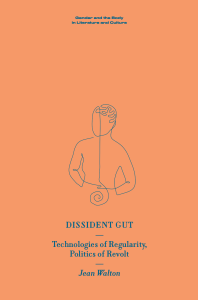Liora O’Donnell Goldensher//
The first thing I heard when I clicked on the link to Gatehouse Media’s recent story was a siren[1]. While I’d known a new long-form investigative project about out-of-hospital birth was underway, I wasn’t familiar with the publication or its goals, and neither were most of the midwives I know from my research about contemporary natural birth and midwifery in the US. The landing page was dramatic. As a composite recording of 911 calls made during out of hospital births began to play, the text of those calls floated onto the screen in large purple letters. The first voices were measured, a midwife reporting the need to transfer for “failure to progress”—a fairly common and non-emergent scenario for a hospital transport, as I knew from my ethnographic research in homebirth midwifery practices. But the end of the brief audio piece, frightened voices were crying out, describing an unresponsive client, a baby not breathing. I was then invited to read four major articles, each with a title–“The Crisis,” “The Failure,” “The Injustice,” and “The Midwife”—as urgent as that initial siren; to “Hear from the Victims” in YouTube videos of parents describing complicated and painful stories of loss and injury during homebirth experiences; to see a list of questions to ask a midwife I might be thinking of hiring, along with which one former midwife’s suggestions of which answers are “best” and which indicate a “dangerous” practitioner; and to “Explore the Database” of United States midwives and birth centers, linking to documents associated with state investigations into midwifery practices and out of hospital birth facilities, assembled by Gatehouse for the story.
The narrative of these articles and their audio introduction is a familiar one for parents and practitioners who choose or attend homebirths. Once again, out-of-hospital birth is cast as an unsafe, backward practice, and the midwives who provide non-obstetrical perinatal care are described as undertrained renegades flouting reasonable safety standards—and facing no accountability when they were responsible for injury and death. One of the central articles in Gatehouse’s investigation focuses on Sarasota County, Florida. Laura Gilkey, a Sarasota homebirth advocate, responded quickly. Her response highlights many of the problems that midwives have raised to me in the days since the original suite of articles appeared on Gatehouse’s site and in its subsidiary publications. The articles, she writes, are misogynistic and insulting, calling midwives and parents “anachronistic” and “cultlike.” They are sensationalizing and biased, exploiting a small number of extraordinarily painful stories of injury and death in out-of-hospital births to suggest a scandal and deflecting attention from a national perinatal care crisis that extends to—and many argue is more acute—in obstetrical care. They conflate a lack of national uniformity or complete coverage national lack of uniform standards for out-of-hospital midwifery training and licensure with the absence of any such standards, at either the community or statutory level. As Gilkey reminds readers, defining out-of-hospital midwifery in terms of its least regulated face misrepresents places like Florida, which in fact has some of the most stringent relevant licensing requirements and requires additional coursework over and above accredited midwifery schooling and passage of the North American Registry of Midwives’ licensing examination. And finally Gilkey notes that the Gatehouse pieces also misrepresent the dynamics of transfers of out-of-hospital care to hospitals during more complex births or those that require care options only available in hospital settings. “And which is it,” she asks, “Are midwives afraid to call 911 for transfers, or do they call too frequently? Because the piece asserts that both are true.” If it’s the former, Gilkey argues, it is the responsibility of all providers to create the kinds of collaborative relationships that she describes as predominant in Sarasota.
The missteps Gilkey points out are common (though not ubiquitous!) features of investigations by skeptics of the safety of out-of-hospital birth. The predominance of narratives such as these in both media accounts and in the research designs of some public health studies of the safety of out-of-hospital birth have spurred not only journalistic responses, but also original research. The MANA statistics project, housed at the Division of Research of the Midwives’ Alliance of North America, has been collecting data about outcomes of planned midwife-attended out-of-hospital birth since 2004, and published initial analysis of that data in 2015. That study (Cheyney et al 2014) aimed to fill the gap in inquiries into the safety of out of hospital birth that investigations like Gatehouse’s exploit. Birth certificate data in the United States does not indicate intended place of birth, presence or quality of perinatal care, or risk profiles for the parent or pregnancy. [Editor’s Note: In New York State, a long-form birth certificate documents place of birth and whether or not a homebirth is ‘planned’.] And randomized control trials comparing outcomes by place of birth are of course difficult (if not impossible) to populate with participants. A number of observational cohort studies had had examined outcomes in Canada and the Netherlands, finding comparable or better outcomes for births that occurred out of hospital when compared with those that occurred in hospital. Cheyney et al (2014) aimed to respond to those critics who argued that these figures did not indicate safety in the United States’ vastly different healthcare system by presenting comparable data representing outcomes and care practices in out-of-hospital midwife-attended birth in the United States. Similarly, the Access and Integration Maternity Care Mapping Study of the University of British Columbia’s Birth Place Lab attempted, for the first time, to sketch the characteristics of the kind of integratation of midwifery care with regional healthcare systems that advocates argue keeps out-of-hospital birth safe—and that Gatehouse’s own investigation decried as lacking. The team created a scoring system for states’ integration of midwives and access to perinatal care, finding that higher values of those scores were associated with better neonatal outcomes and less obstetric intervention (Vedam et al 2018).
Birth Place Lab and the MANA Stats Project both take aim at the problems of information associated with the question of safety in out of hospital birth. They document what out-of-hospital midwives and parents who choose their care have long believed in a form that is familiar to policymakers and analysts. It’s a project that aims, in the tradition of feminist empiricism, to broaden the community of knowers (see, for instance, Harding 1992), adopting the methods and speaking the language of public health research in order to transmit information not previously admitted into the official record. The publication of Gatehouse’s investigation well after the wide release of both projects’ major articles points up the fact that homebirth and midwifery face not just a problem of information, but a problem of classification. Classifications, as Bowker and Star wrote in 1999, are “ordinarily invisible,” but become visible in moments of breakdown or contention (Bowker and Star 2000:2). This mismatch in classificatory schemes reveals itself most obviously in Gatehouse’s database. The authors note that they have included Certified Nurse-Midwives (CNMs) and licensed Certified Professional Midwives (CPMs) in their database because out-of-hospital births are attended by midwives holding both credentials. This method of classifying midwives might make sense in theory, but its use results in a rather poor representation of reality: the database includes many CNMs who have never practiced anywhere but a hospital, and does not include any CPMs in some states in which licensure for CPMs is unavailable. It therefore excludes many of the midwives it intends to capture and includes many whose work it does not intend to represent. Gatehouse also describes CPMs as midwives who “lack” nursing degrees, a description that rankles many midwives who chose the CPM’s distinctive out-of-hospital path in order to train in the home and birth center settings where they planned to practice. Classification can be used to make work visible (Bowker and Star 2000: 29). Birth Place Lab researchers aimed to make the work of integrating midwifery into regional healthcare systems visible with their classification system of integration “scoring”.
The Gatehouse reporters may well have read the research produced by MANA Stats and Birth Place Lab researchers. But they clearly did not accept the foundational presuppositions of both: that CPMs are healthcare providers trained specifically for the context in which they practice and not unqualified stand-ins for better practitioners, or that the safety of low-risk birth in out-of-hospital contexts can be identified with reference to level of access to hospital consultation and care transfer options. The reporters, in other words, did not accept or share the researchers’ system of classifications. One way to think about contemporary homebirth midwifery might be to consider it to be an attempt to “escape” the classifications embodied in approaches like the one Gatehouse adopts, in which, for instance, training in the mainstream healthcare system is classified as producing safe care providers. If this is so, it is in the encounter between studies like those produced by Birth Place Lab or MANA Stats and journalism like Gatehouse’s pieces that the “material force” (Bowker and Star 2000:2) of such a classificatory system reveals itself. The Gatehouse piece is absolutely biased, sensationalizing, and factually inaccurate in many ways. But its publication is also instructive: it points to the durability of systems of classification, and the difficulty of proceeding with challenges to problems of knowledge when problems of classification persist.
Sources
Bowker, G. C., & Star, S. L. (2000). Sorting Things Out: Classification and Its Consequences. MIT Press.
Cheyney, M., Bovbjerg, M., Everson, C., Gordon, W., Hannibal, D., & Vedam, S. (2014). Outcomes of care for 16,924 planned home births in the United States: the Midwives Alliance of North America Statistics Project, 2004 to 2009. Journal of Midwifery & Women’s Health, 59(1), 17–27.
Gilkey, L., Guest Columnist. (2018, December 10). Gilkey: “Failure to Deliver” series one-sided. Sarasota Herald.
Harding, S. (1992). Rethinking standpoint epistemology: What is” strong objectivity?”. The Centennial Review, 36(3), 437-470.
Le Coz, E., Salman, J., & Sherman, E. (n.d.). The Failure: Midwife assisted births outside the hospital more dangerous, GateHouse Media investigation finds. GateHouse Media. Retrieved from http://gatehousenews.com/failuretodeliver/
Vedam, S., Stoll, K., MacDorman, M., Declercq, E., Cramer, R., Cheyney, M., … Kennedy, H. P. (2018). Mapping integration of midwives across the United States: Impact on access, equity, and outcomes. PLOS ONE, 13(2).
[1] While this particular story from the suite of articles is cited, I’ve chosen not to link to the article in the body of the text after several homebirth midwives asked me not to encourage web traffic to the article. Many are concerned that increased traffic will translate to privileging in searches for homebirth and out-of-hospital birth, steering interested parents towards a poor and fearmongering representation of the relevant issues.


